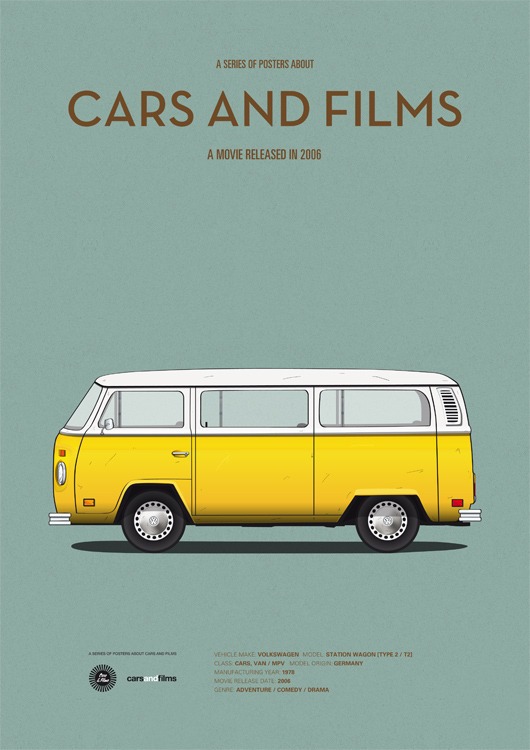7 thin layer chromatography chemistry courses
Data: 4.09.2018 / Rating: 4.8 / Views: 859Gallery of Video:
Gallery of Images:
7 thin layer chromatography chemistry courses
93 7. ThinLayer Chromatography You will need to bring your package of TLC plates on this day. Not all plates will be used in this experiment; some. Thin layer chromatography (TLC) is an easy, convenient and inexpensive way to determine how many components are in a mixture and, in many instances, can be used to identify the components as well. Thin Layer Chromatography (TLC) is an extremely useful technique for monitoring reactions. It is also used to determine the proper solvent system for performing separations using A thin layer chromatography experiment of medical importance is described. The experiment involves extraction of lipids from simulated amniotic fluid samples followed by separation, detection, and scanning of the lecithin and sphingomyelin bands on TLC plates. ThinLayer Chromatography Chemistry Courses Thin layer chromatography (TLC) is a widely employed laboratory technique used to separate different biochemicals on the basis of their size and is similar to paper instead of using a Chromatography Today provides a comprehensive coverage of various separation methods: gas, liquid, thinlayer, and supercritical fluidchromatography, and capillary electrophoresis. Particular attention is paid to the optimization of these techniques in terms of kinetic parameters and retention mechanisms. oxide, or cellulose (blotter paper). 7 thin layer chromatography chemistry courses, thin layer chromatography or tlc, is a solid liquid form of chromatography where the stationary phase is normally a polar absorbent and the mobile phase can be a single solvent or combination of solvents. Paper (Partition) and Thin Layer Chromatography, CBSE, Class 11, Chemistry; Video 04: 02 min; Presentation on Thin Layer Chromatography Principle and Rf Value Thin layer chromatography is done exactly as it says using a thin, uniform layer of silica gel or alumina coated onto a piece of glass, metal or rigid plastic. The silica gel (or the alumina) is the stationary phase. Thin Layer Chromatography, or TLC, uses a flat plate coated with a stationary phase instead of a packed column. One edge of the plate is dipped into the mobile phase, which moves up through the. chemistry courses, 93 7 thin layer chromatography you will need to bring your package of tlc plates on this day not all plates will be used in this experiment; some will be needed in lab the following week. Title: Thin Layer Chromatography In Phytochemistry Chromatographic Science Series Keywords: Download link for Thin Layer Chromatography In Phytochemistry Chromatographic Science Series, Read File Online for Thin Layer Chromatography In Phytochemistry Chromatographic Science Series pdf live, Library link download Thin Layer Chromatography In Phytochemistry Chromatographic Science. Thin Layer Chromatography (TLC) TLC is a simple, quick, and inexpensive procedure that gives the chemist a quick answer as to how many components are in a mixture. TLC is also used to support the identity of a compound in a mixture when the R f of a compound is compared with the R f of a known compound (preferably both run on the same TLC plate). Thin Layer Chromatography Video Lesson and Learning Motivation in Organic Chemistry Laboratory Classes of Chemistry, Chemical Engineering and Pharmacy courses UFF ThinLayer Chromatography Chemistry Courses A chromatography detector is a device used in gas chromatography (GC) or liquid chromatography (LC) to detect components of the mixture being eluted off the chromatography column. There are two general types of detectors: destructive and ThinLayer Chromatography Chemistry Courses A thin film is a layer of material ranging from fractions of a nanometer to several micrometers in thickness. The controlled synthesis of materials as thin films (a process referred to as deposition) is a fundamental step ThinLayer and Column Chromatography Chemistry lessons: column chromatography, thin layer chromatography, natural products isolation Green lessons: renewable resources Reference reading: Zubrick, ch 2728 (TLC and Column Chromatography) Introduction Chromatography is the general term given to various techniques used to separate the components of a mixture by passing the mixture. Let your students be like a Chemistry Special Agent learn the method of Thin Layer Chromotography and its applications. Thin Layer Chromatography is an important method in Police investigation work and you shouldn't miss it. Thinlayer chromatography or TLC, is a solidliquid form of chromatography where the stationary phase is normally a polar absorbent and the mobile phase can be a single solvent or combination of solvents. Liquid Thin layer of SilicaAlumina Thin layer chromatography Liquid Paper Paper chromatography 6. The chromatographic behavior of a solute can be described either by its retardation factor(R) or by retention volume (V R). By varying sorbentsolvent combinations and operating parameters, the degree of The TLC plates to be used consist of a thin layer of solid silica gel coated onto a Thinlayer chromatography is an improvement on paper chromatography because the Paper Chromatography, CHEM PH209 General Chemistry 2 Laboratory Manual. Chromatography Introduction HPTLC is a form of thinlayer chromatography (TLC) that provides superior separation power using optimized coating material, novel procedures for mobilephase feeding, layer conditioning, and improved sample application. Thin layer chromatography (TLC) is a chromatographic technique used to separate the components of a mixture using a thin stationary phase supported by an inert backing. It may be performed on the Thin Layer Chromatography Chemistry LibreTexts Chromatography Today provides a comprehensive coverage of various separation methods: gas, liquid, thinlayer, and supercritical fluidchromatography, and capillary electrophoresis. Particular attention is paid to the optimization of these techniques in terms of kinetic parameters and retention mechanisms. thin layer chromatography This page is an introduction to chromatography using thin layer chromatography as an example. Although if you are a beginner you may be more familiar with paper chromatography, thin layer chromatography is equally easy to describe and more straightforward to. Aspirin (2nd edition) Compiled by David Lewis Edited by Colin Osborne and Maria Pack Designed by Imogen Bertin and Sara Roberts First published by the Royal Society of Chemistry in 1998 Thin layer chromatography, abbreviated as TLC, is an analytical tool that is frequently used in chemistry laboratories to study the purity of organic compounds or to separate and analyze the components of complex mixtures. Thinlayer chromatography is the most commonly used analytical technique in many research labs. This video walks you through every step, from setting up a developing chamber to calculating Rf values. Big questions in organic chemistry lab: Was it purified? 3 TLC Thin layer chromatography Stationary phase Mobile phase Separation AND Characterization. 4 Polarity and IMF Silica gel: polar, watercovered surface Compound(s). Thin Layer Chromatography: Applications and Advantages 2. Thin Layer Chromatography Thin layer chromatography is a type of liquid chromatography that is used to separate non volatile mixtures such as glycerin into its individual components. Two main types: ThinLayer Chromatography (TLC) Column Chromatography (CC) Uses: To separate the components of a mixture TLC CC To determine the purity of a compound TLC To see if two compounds are identical TLC To monitor the progress of a reaction TLC To follow a column chromatography separation TLC A. Other types of chromatography touched on include ionexchange, gel permeation, thinlayer and paper chromatography, among others. The course goes on to look at detectors and various applications. Thinlayer chromatography is a quick and inexpensive way to separate the components of a mixture and requires only a very small sample for analysis. it is a convenient way to follow the course of a reaction. ThinLayer Chromatography Chemistry Courses Find Cinnamaldehyde Natural, Flavis No 5. 014 and more food grade flavor ingredients at SigmaAldrich. Cinnamaldehyde Natural, Food Grade Flavor Ingredient Find Lemon oil and other foodgrade flavor ingredients at SigmaAldrich. Experiment 5 Column Chromatography Chemistry. ThinLayer Chromatography Chemistry Courses 93 7 thinlayer chromatography you will need to bring your package of tlc plates on this day not all plates will be used in this experiment; some will be needed in lab the following week. Thin layer chromatography the clay minerals society. ThinLayer Chromatography Chemistry Courses Paper is a thin material produced by pressing together moist fibres of cellulose pulp derived from wood, rags or grasses, and drying them into flexible sheets. It is a versatile material with many uses, including writing, printing. Thinlayer chromatography (TLC) is a very commonly used technique in synthetic chemistry for identifying compounds, determining their purity and following the progress of a reaction. It also permits the optimization of the solvent system for a given separation problem. chromatography, separation, mobile phase, stationary phase, thin layer chromatography, high performance liquid chromatography, gas chromatography. Topical and themed; Chromatography Powerpoint. Author: Created by katiekeyhole. KS3 Chemistry Year 7 States of Matter distillation, chromatography. 7 thin layer chromatography chemistry courses, 93 7 thin layer chromatography you will need to bring your package of tlc plates on this day not all plates will be used in this experiment; some will be needed in lab the following week. The course gives a theoretical as well as a practical introduction to principles and techniques of chromatography: adsorption and partition chromatography (normal and reversedphase systems), thin layer chromatography (TLC), column liquid chromatography including HPLC, gas chromatography, ion exchange and size exclusion chromatography. TLCAdvanced Discover a few of the more complicated skills related to thin layer chromatography cutting glass TLC plates, flamepulling spotters, and using TLC stains to
Related Images:
- Man woman and the wall
- Lifan 125 Manual Repair
- Encouragement of climb
- Application For Pearl Harbor Apprenticeship Program
- Koutetsu no majo annerose
- Go Math Grade 6 Answer Key
- Hunger games dts
- Dual eng chi
- Spanish Listening May
- Day break s1
- Secret origins 003
- Understanding Bioinformatics
- The seed season 1
- Write Screenplays That Sell The Ackerman Way
- Transformers 2 2018 dvd
- Safe house dutchreleaseteam
- Coding Games in Scratch
- Chess opening book
- Once upon a time season 1 nl subs
- Gravity 1080 fall
- The Big Titty Queen Is Back
- Californication season 1 episode 9
- Fine young greatest
- Pink floyd 1972
- Il Peggior Natale Della Mia Vita
- Christian rap shai linne
- Pvc Project Book Garden Workshop
- Cool guy 1080p
- Non stop mac
- Control systems components by m d desai
- 3510 Gehl Skid Loader Manual
- The walking dead webisode 1
- Che vita il meglio
- Final cut 2 encore collectors edition
- Diary of a wimpy kid roderick
- Teen mom 2 season 4
- Westlife the love
- All About Me Planning Reception
- Titulos Valores y Valores Negociables
- F4Mtester Zip Download
- Dvdinfopro hd
- Fire planes rescue
- Manual De Usuario Jetta Clasico 2014
- Holden Rodeo Ra Workshop Manuals Download
- Judwaa 2 Hindi
- Samurai jack cbr
- Harley Softail Owner Manual Download
- Hip hop brass
- Once upon a time extras
- The grim adventures of billy and mandy
- Valeria a nadseni
- The economist nov
- Mac Family Tree Registration Key
- Eng subs disney
- Come Back to ME
- The cell fr
- Dark of he moon
- Internet explorer 8
- Dj mix rnb 2018
- Minis first time
- The parody 4
- Dutchreleaseteam step up
- Graphicriver Particles Dispersion Action 10112520
- The Goldbergs 2018
- Shot through the heart
- John lurie stranger
- The sims 2 crac
- Game of thrones s04e09
- Cosplay queens tied up
- No cd call
- Arrow s01 dts
- Windows 7 Home Premium
- Zero hour s01e01
- Borges Libros Y Lecturas Pdf
- Cumlouder Nekane
- Insta code 2018
- The Driver S01
- Philips 42 Inch Tv Manuals
- Zero to 100
- Cowards and Monsters
- Chelsea vs bayern munich champions league
- Introduction To Ramsey Spaces
- Beauty and the beast greek
- Candy cr 81 pdf
- Beira do Caminho












